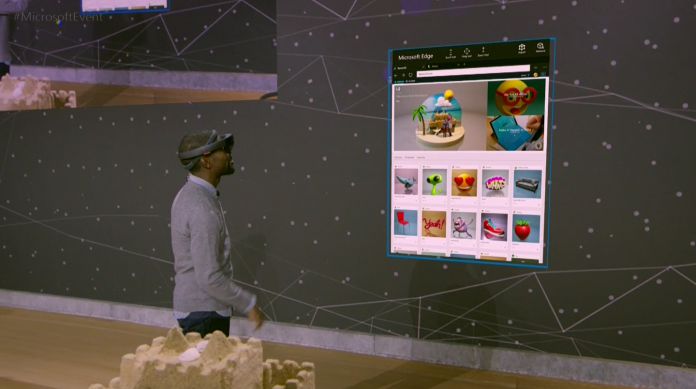Microsoft has confirmed its will start selling its first PC-attached mixed reality headsets for Windows 10 to developers this March. More specifically, the company will begin to ship the devices at the Game Developers Conference. The GDC event is taking place between February 27 to March 3 this year in San Francisco.
The announcement was made by Vlad Kolesnikov, senior program manager at Microsoft. He was talking during a webcast and said the new hardware will be compatible with Windows 10 Creators Update.
Microsoft discussed its ambitions with virtual and mixed reality at the launch of the reveal of the Creators Update in October. In a similar tactic to the one employed for the HoloLens AR headset, Microsoft will give the hardware to developers to create and test applications.
However, these developer headsets will not be the ones built by OEMs for consumers. They are going to arrive later in the year. Microsoft partners such as Acer, Asus, Lenovo, Dell, and HP have confirmed they are creating VR headsets.
The headsets will be built on Microsoft’s Holographic Shell for Windows 10. Using mixed reality, the devices will marry aspects of HoloLens with VR products like Oculus Rift. For example, like HoloLens, users will be able to interact with 3D objects in a real environment. On the other hand, users can also interact with media (games, movies, apps) in a 3D environment, like Oculus Rift.
Spec Requirements
One major difference from the HoloLens is that the headsets will be tethered. Microsoft’s augmented reality product is a powerhouse that is portable and deals with the computing itself. These tethered headsets, on the other hand, will rely on the computers to do the heavy lifting.
Because of this, PCs will need some basic hardware requirements to power the devices. For example, laptops will need Intel Core i5 ON Kaby Lake silicon, with 8GB of RAM. Desktops will need Intel Core i5 on Skylake. However, Microsoft has said it is making VR more accessible by lowering the minimum specs and by introducing affordable hardware.
“We’ve lowered the specs you need for a PC from a $1,500 system to a $500 one,” Microsoft Technical Fellow Alex Kipman told Polygon in October. “So now what used to cost you $2,000 [including the headset and PC], now you can get into for $800 and it’s the most powerful, most immersive experience.”





